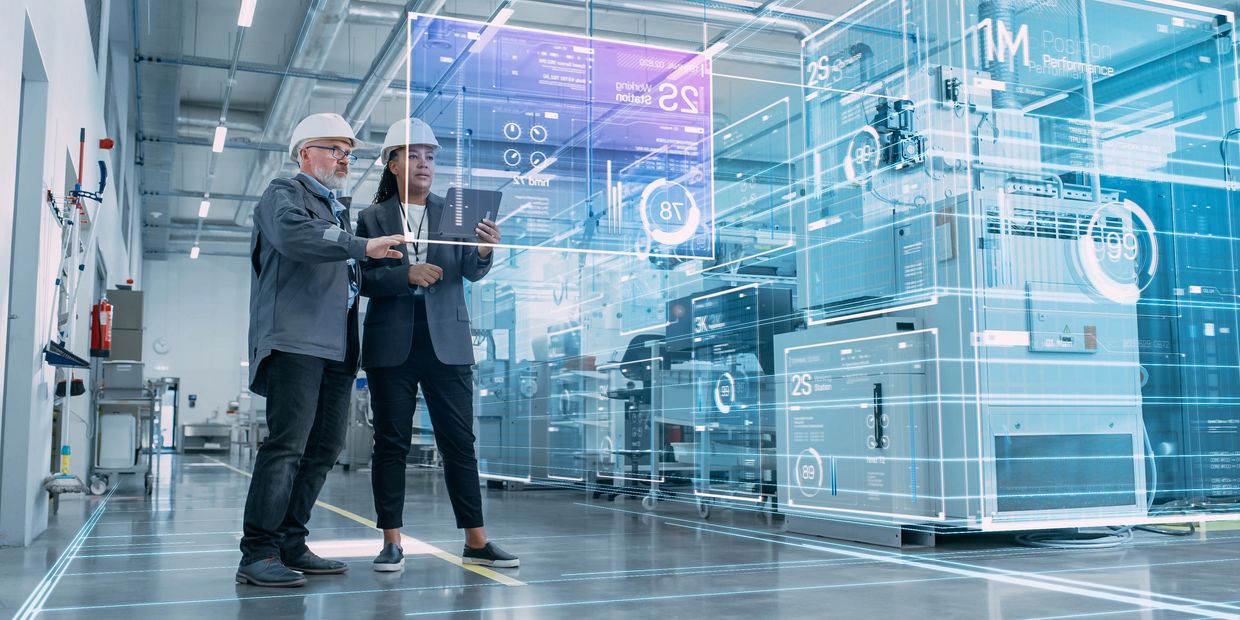The Future of Work: Engineering & Design

Engineering & Design are interconnected digital ecosystems.
Engineering and design occupy the creative frontier of the Fourth Industrial Revolution (4IR). Once defined by manual drafting boards and isolated CAD terminals, these professions are now woven into interconnected digital ecosystems where generative AI, robotics, additive manufacturing (3D printing), and extended reality (XR) transform both process and product.
According to Deloitte (2024), the convergence of advanced computing, AI-assisted modeling, and digital twins is not merely enhancing productivity but redefining creative autonomy, collaboration, and ethical responsibility. In this context, the future of work in engineering and design demands fluency in data-driven design methods, interdisciplinary teamwork, and adaptive problem-solving that aligns technological innovation with human-centered outcomes.


Engineers no longer design for machines... Engineers design with machines.
Synthesis & Key Insights
Engineering and design professionals stand at the intersection of creativity, computation, and ethics. The World Economic Forum (2023) identifies 4IR technologies as catalysts for “human–machine symbiosis,” shifting engineers’ roles from manual optimization to strategic orchestration of intelligent systems. Deloitte (2024) similarly finds that digital engineering platforms reduce design cycles by up to 40%, allowing engineers to focus on conceptual innovation rather than procedural tasks.
However, these efficiencies come with new complexities. Liu and Ahmed (2024) emphasize that AI-generated solutions require human oversight to ensure contextual relevance, feasibility, and social responsibility. The human engineer becomes less a drafter and more a systems integrator, a professional who curates, interprets, and refines algorithmic outputs. Autodesk Research (2023) reinforces this notion, showing that designers using generative AI tools report higher creative satisfaction yet express concerns about authorship and intellectual property.
McKinsey (2024) adds a strategic layer: organizations adopting digital twins (virtual replicas of physical systems) are not merely increasing operational visibility; they are also redefining cross-functional collaboration among engineers, designers, and manufacturers. This trend necessitates new communication skills, data literacy, and agile management models across global teams.
Traits of the future of work in engineering & design

Augmentation
Augmentation
Augmentation
AI and digital tools amplify human creativity rather than replace it.

Integration
Augmentation
Augmentation
Engineering increasingly depends on multidisciplinary, data-driven collaboration across digital ecosystems.

Stewardship
Augmentation
Stewardship
The ethical use of AI in design demands transparency, fairness, and sustainability awareness.
The profession is evolving from Precision Work to Purposeful Work.
where the measure of success is not just technical performance but the societal value engineered into every design.
Curated Resources
"Shaping the Future of Advanced Manufacturing and Production"
"Shaping the Future of Advanced Manufacturing and Production"
"Shaping the Future of Advanced Manufacturing and Production"
Establishes a macro-level understanding of how 4IR technologies, especially automation, AI, and digital twins, are reshaping engineering and design workflows. Emphasizes the interplay between human creativity and machine intelligence.
-
World Economic Forum. (2023). Shaping the future of advanced manufacturing and production: 2023 insights report. Geneva: Author.
"Digital Engineering and Design in the Age of AI"
"Shaping the Future of Advanced Manufacturing and Production"
"Shaping the Future of Advanced Manufacturing and Production"
Provides insight into how digital transformation is altering engineering practices, with case studies on simulation, generative design, and sustainability metrics. Serves as a practical lens for workforce evolution and reskilling needs.
-
Deloitte. (2024). Digital engineering and design in the age of AI. Deloitte Insights.
"The Future of Product Development: AI and Digital Twins"
"Shaping the Future of Advanced Manufacturing and Production"
"Generative Design and the Future Engineer: Human-AI Collaboration in Product Innovation"
Offers data on the impact of digital twin ecosystems and AI-enabled design on time-to-market, collaboration efficiency, and cost reduction. Connects directly to the changing nature of engineering teams and global supply chains.
-
McKinsey & Company. (2024). The future of product development: AI and digital twins. McKinsey & Company.
"Generative Design and the Future Engineer: Human-AI Collaboration in Product Innovation"
"Generative Design and the Future Engineer: Human-AI Collaboration in Product Innovation"
"Generative Design and the Future Engineer: Human-AI Collaboration in Product Innovation"
mpirical and conceptual analysis of how generative algorithms alter the designer’s role, from decision-maker to curator and collaborator. Explores ethical and cognitive implications of co-creating with AI.
-
Liu, J., & Ahmed, F. (2024). Generative design and the future engineer: Human–AI collaboration in product innovation. Journal of Engineering Design, 35(2), 189–207.
"The Augmented Designer: Creativity in the Age of Generative AI"
"Generative Design and the Future Engineer: Human-AI Collaboration in Product Innovation"
"The Augmented Designer: Creativity in the Age of Generative AI"
As a leading design-technology firm, Autodesk provides case evidence of AI’s real-world impact on design processes, demonstrating how engineers use machine learning to iterate thousands of solutions while prioritizing sustainability and efficiency.
-
Autodesk Research. (2023). The augmented designer: Creativity in the age of generative AI. Autodesk Research.
Additional Topics Worthy of Further Exploration:

Generative Design and Cognitive Collaboration
Liu and Ahmed’s (2024) findings uncover how engineers co-create with algorithms. This highlights shifts in creativity, authorship, and trust as human intuition interacts with machine learning.
Digital Twins and the Rise of Cyber-Physical Workflows
McKinsey (2024) data shows that 80% of advanced manufacturers plan to scale digital twin initiatives by 2026. The workforce implications, such as data integration roles and remote monitoring expertise, will present new workflows and employment.
Sustainable and Ethical Engineering in the AI Era
Deloitte (2024), analyzes how digital design tools are being leveraged to reduce waste, enhance circular manufacturing, and embed ESG metrics in design workflows.
The Globalization of Design Work
The WEF (2023) insights reveal how cloud-based collaboration platforms enable borderless teams. The implications for intellectual property, cultural fluency, and design equity warrant further assessment..
Human Factors and Emotional Intelligence
Empathy, communication, and ethical reasoning, often undervalued in technical education, become differentiating skills in AI-mediated design environments.
This website uses cookies.
We use cookies to analyze website traffic and optimize your website experience. By accepting our use of cookies, your data will be aggregated with all other user data.